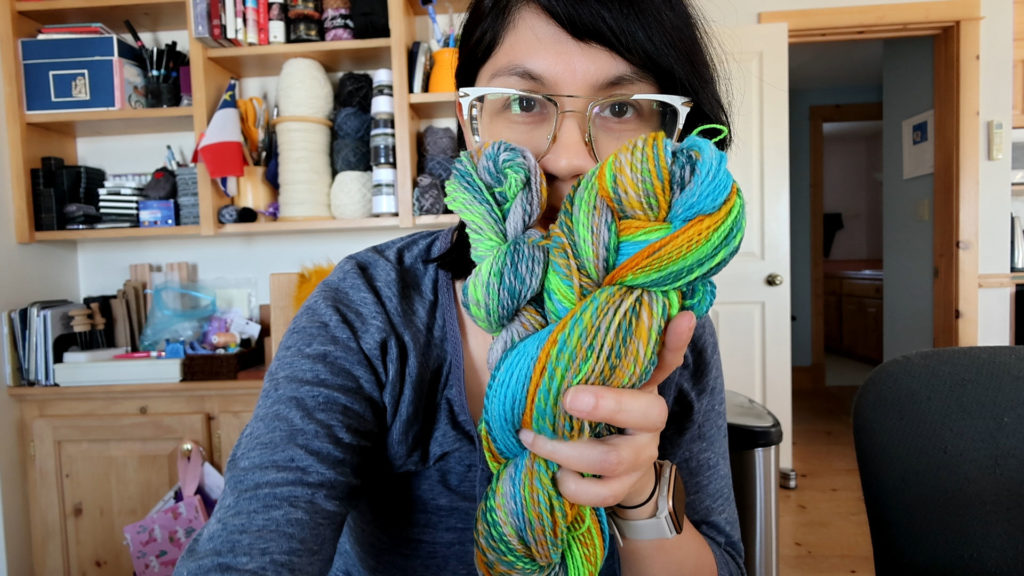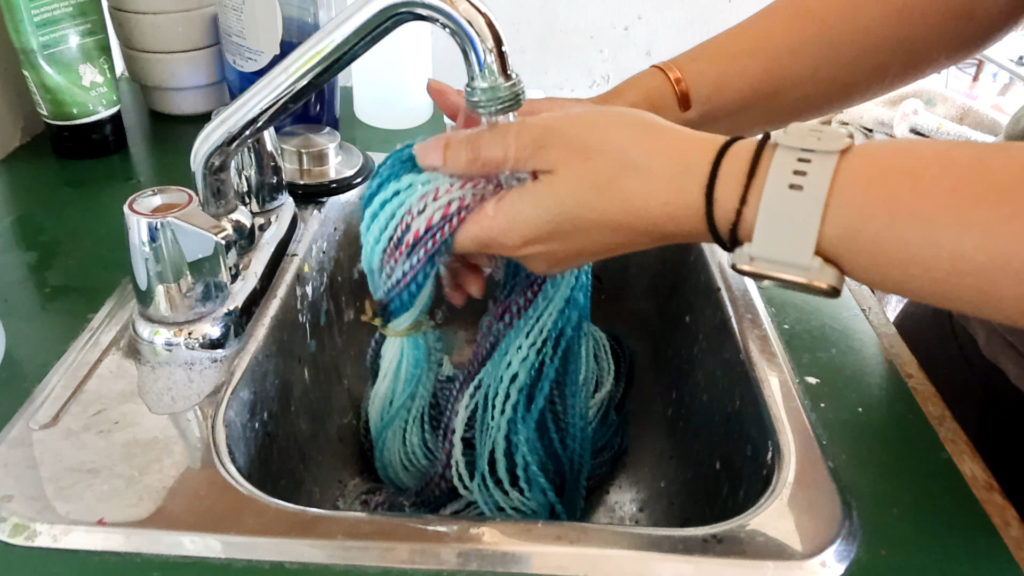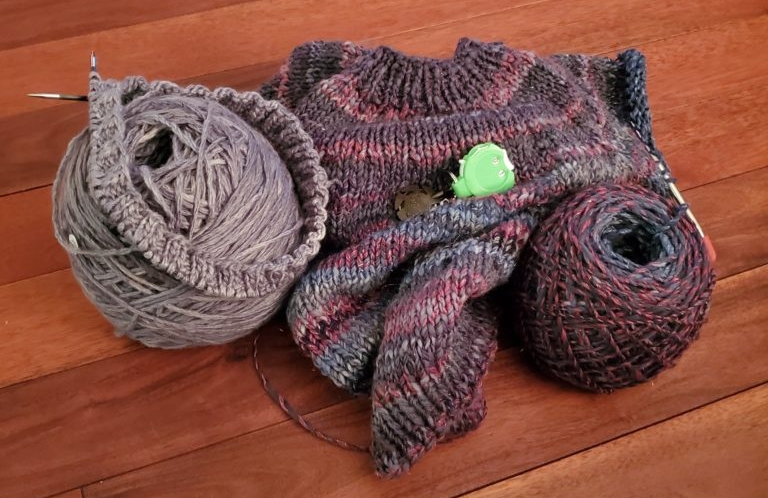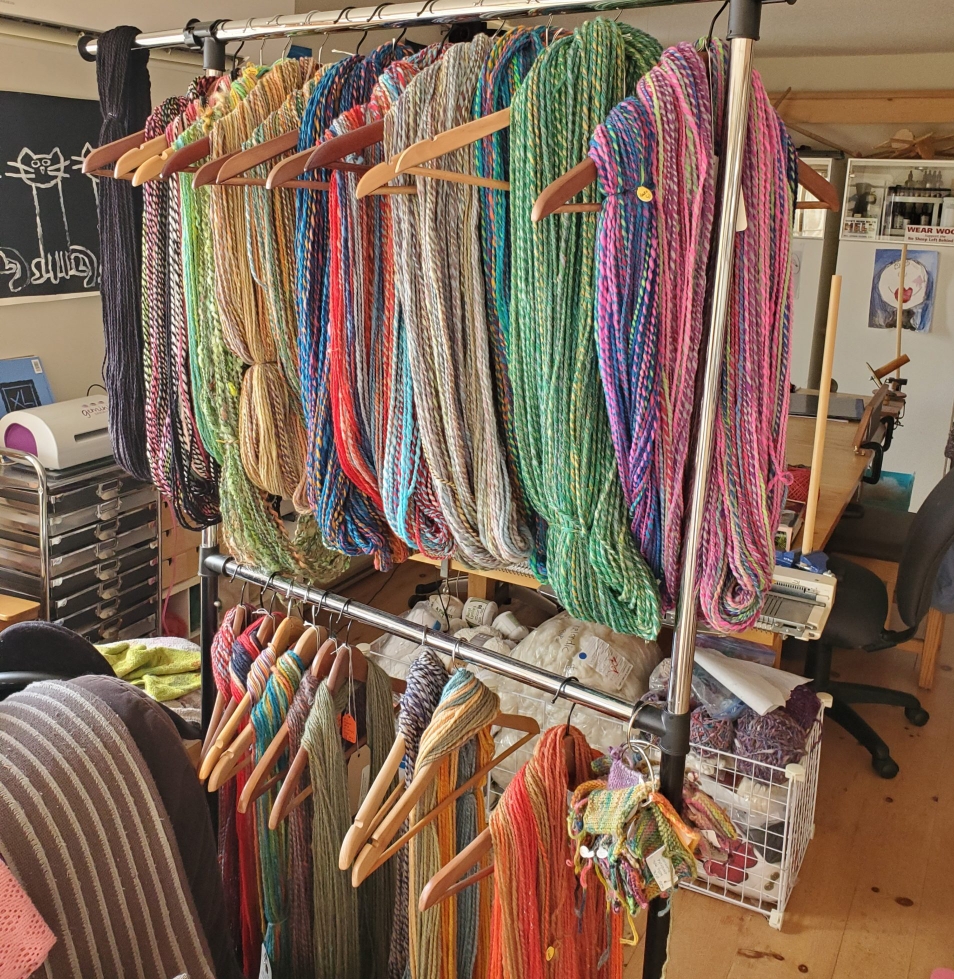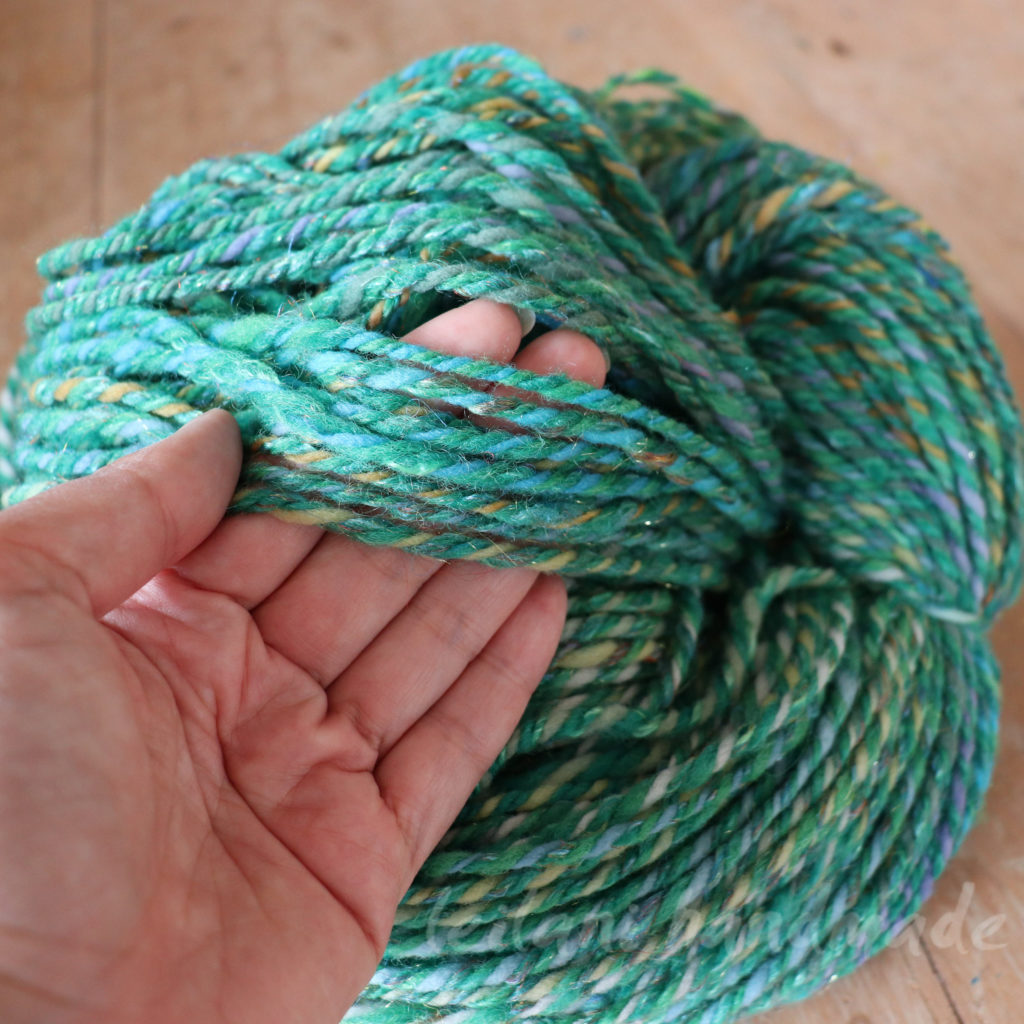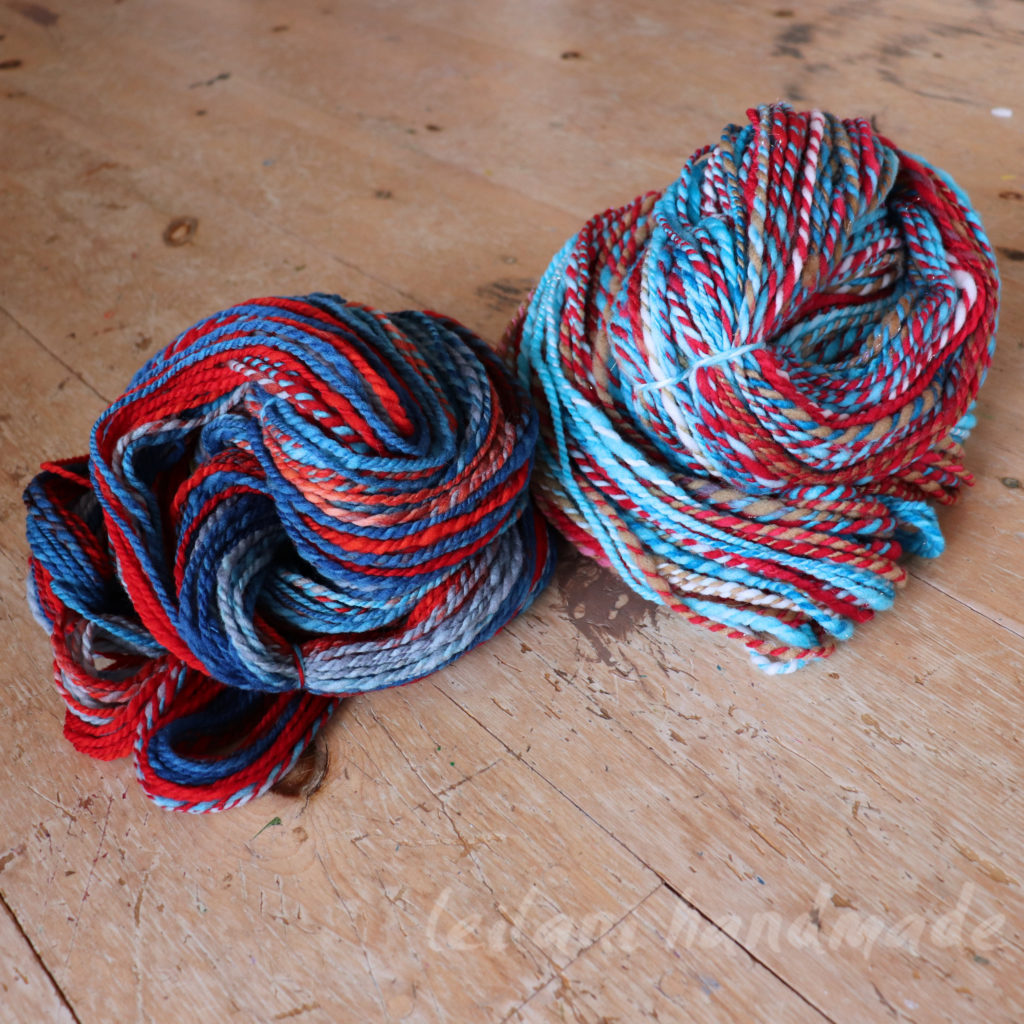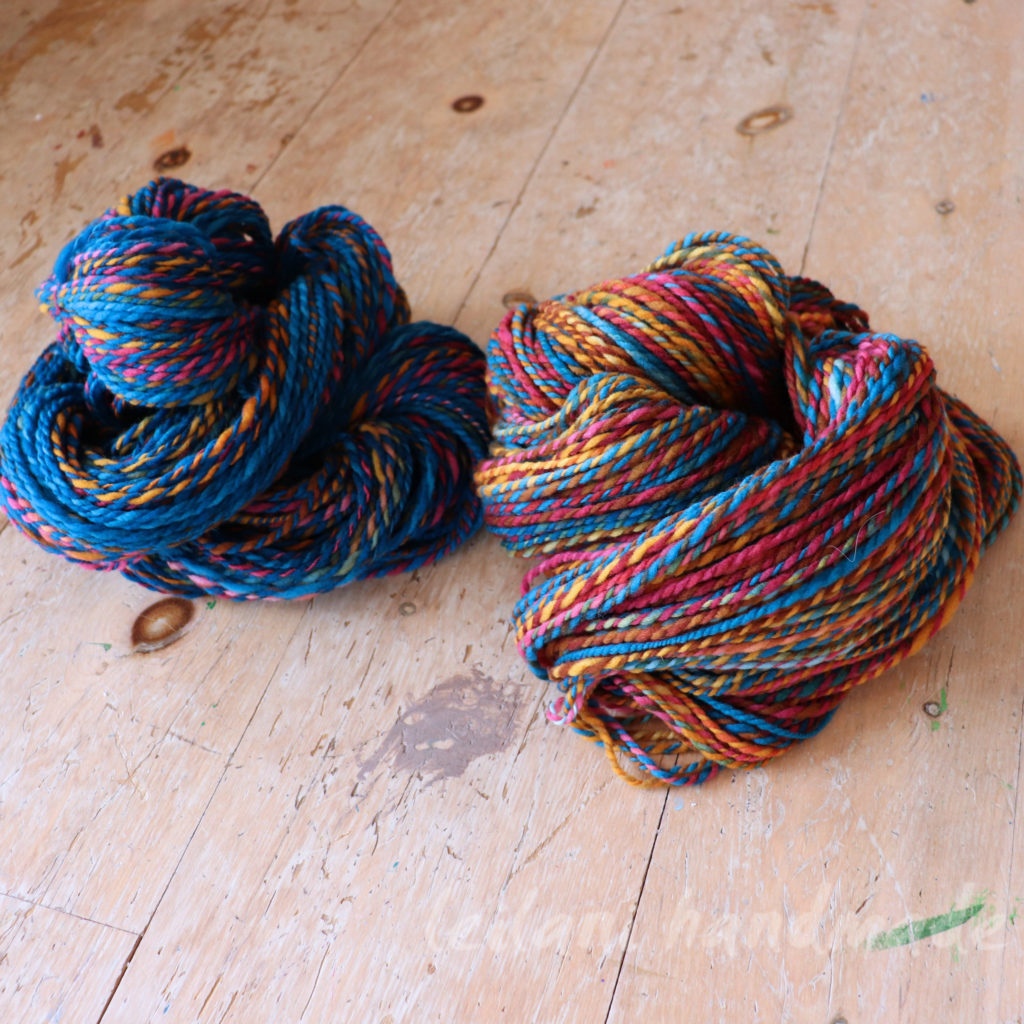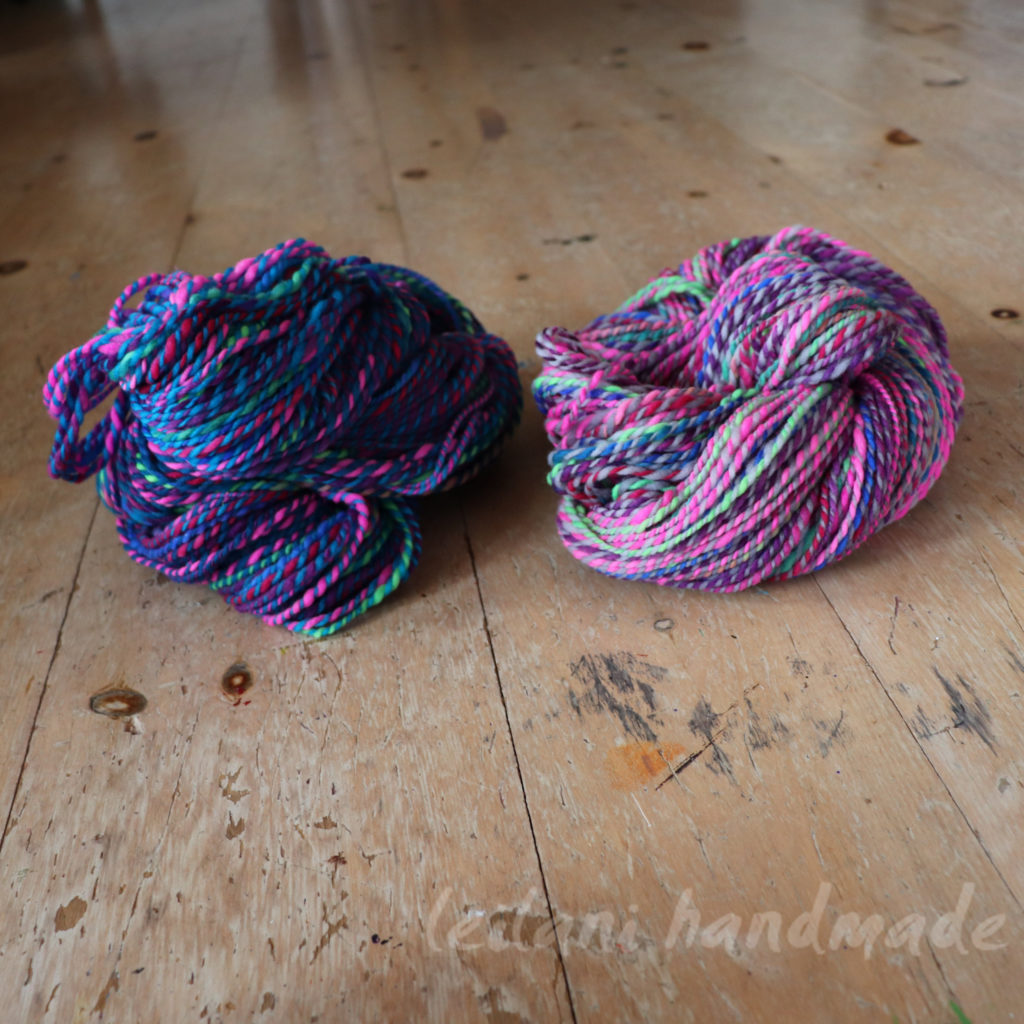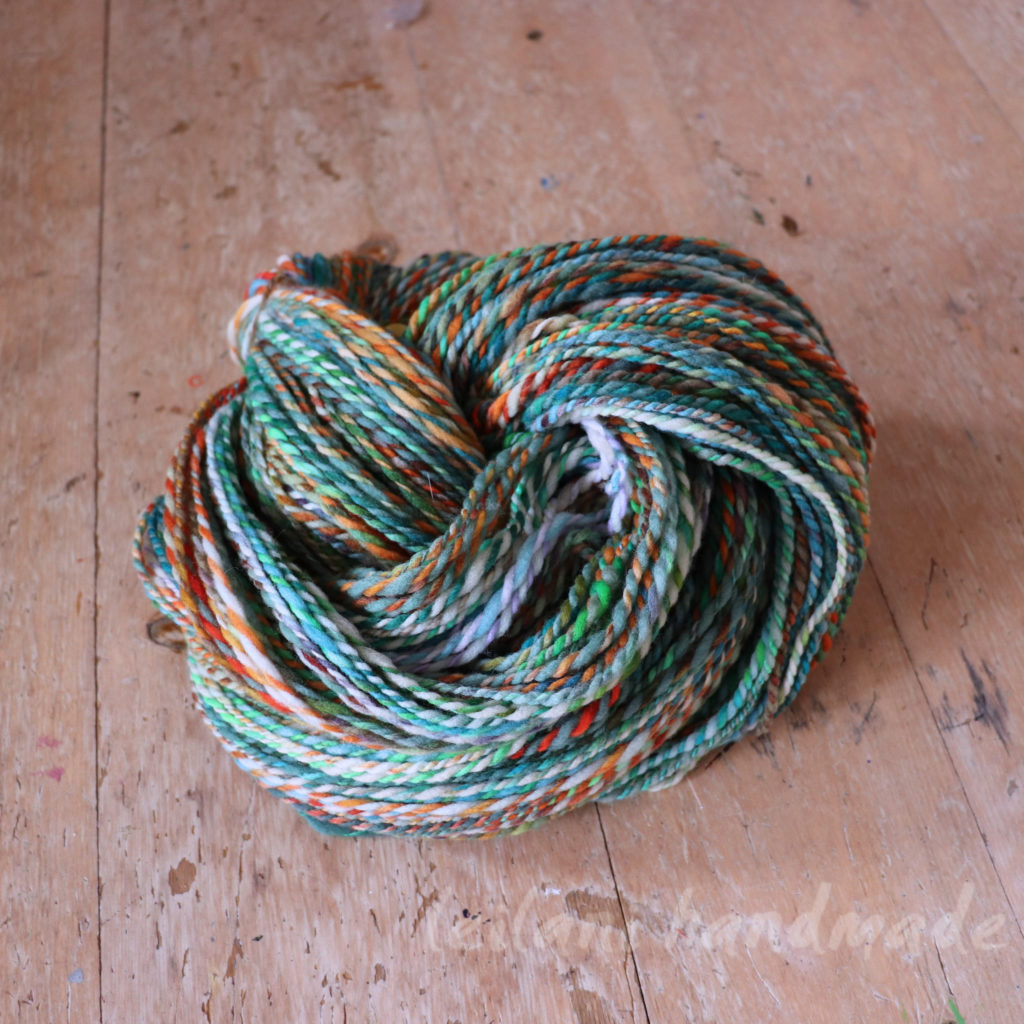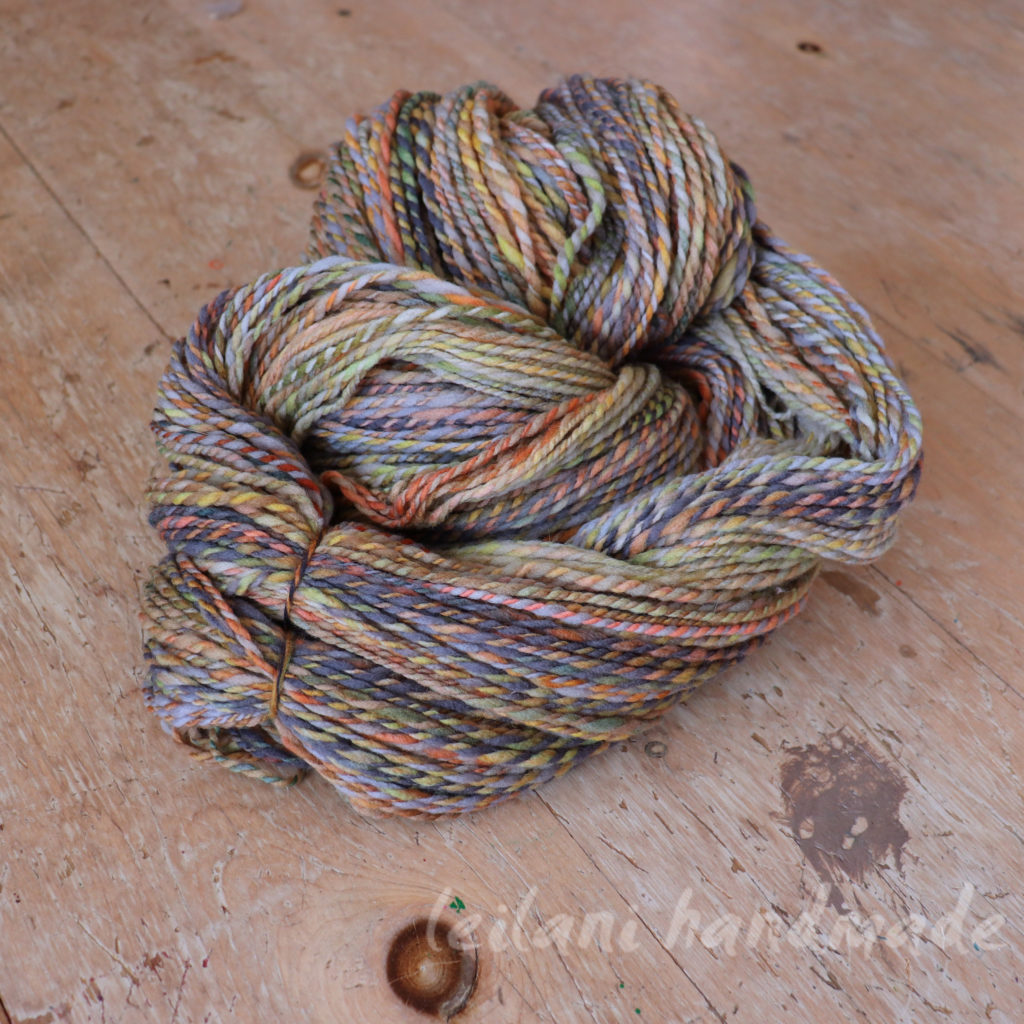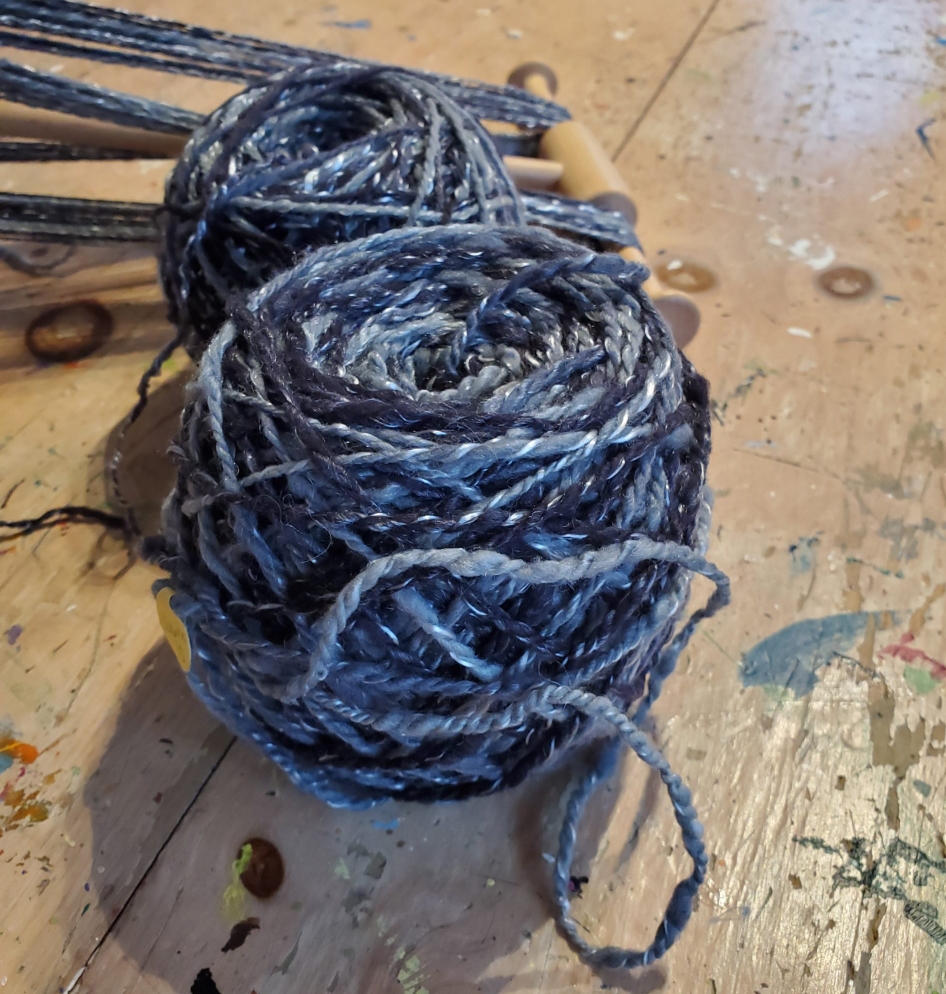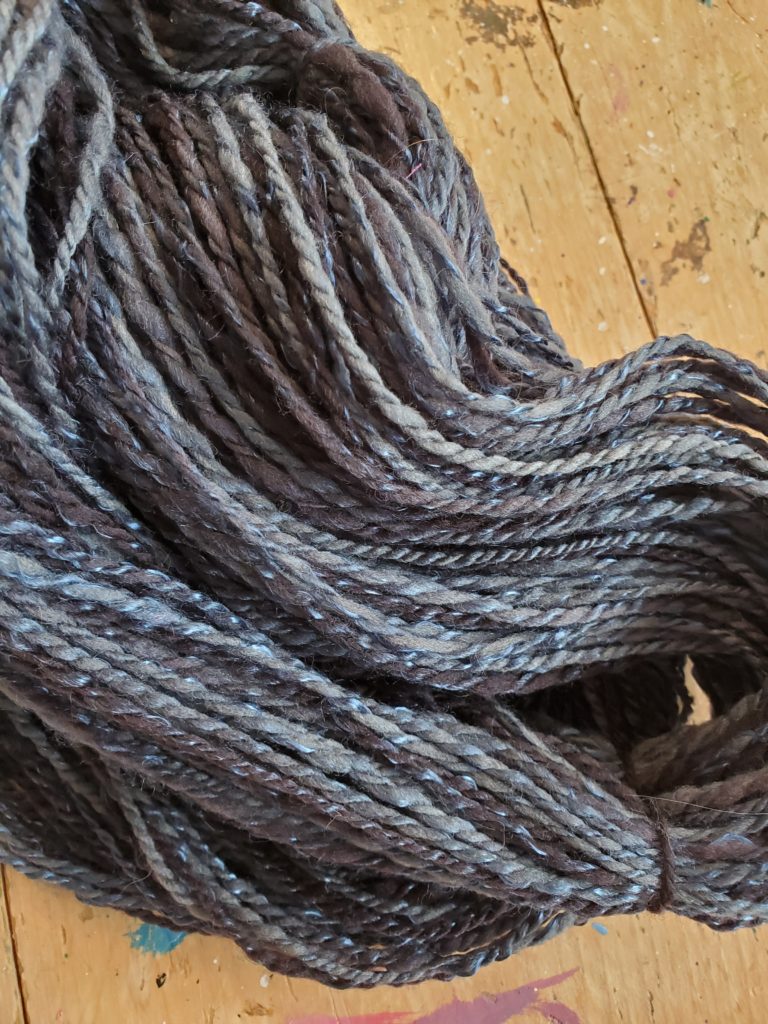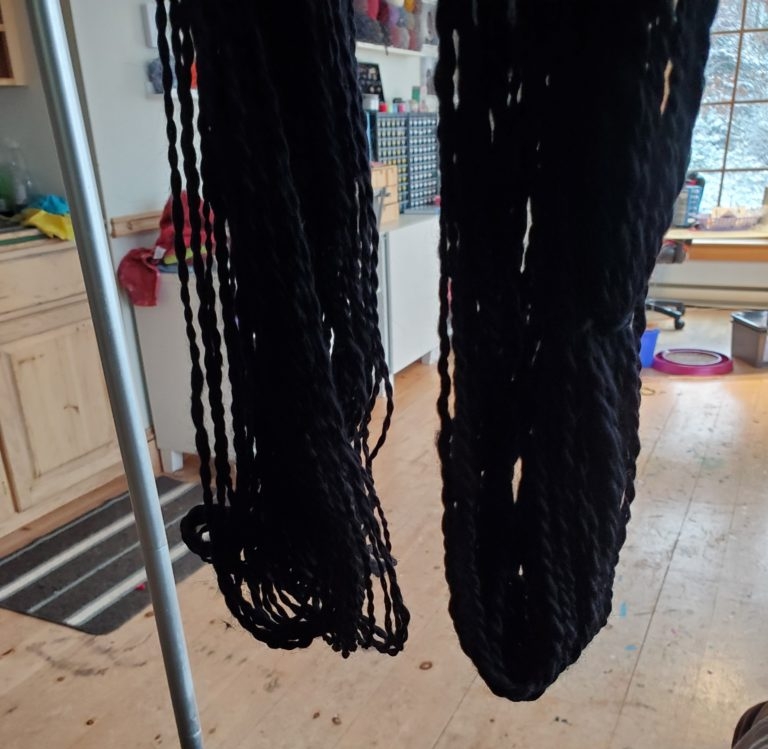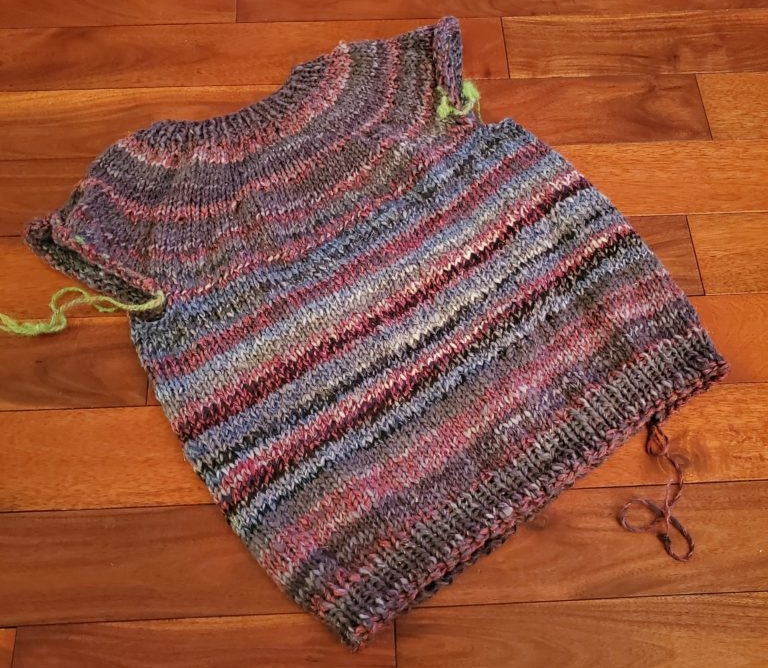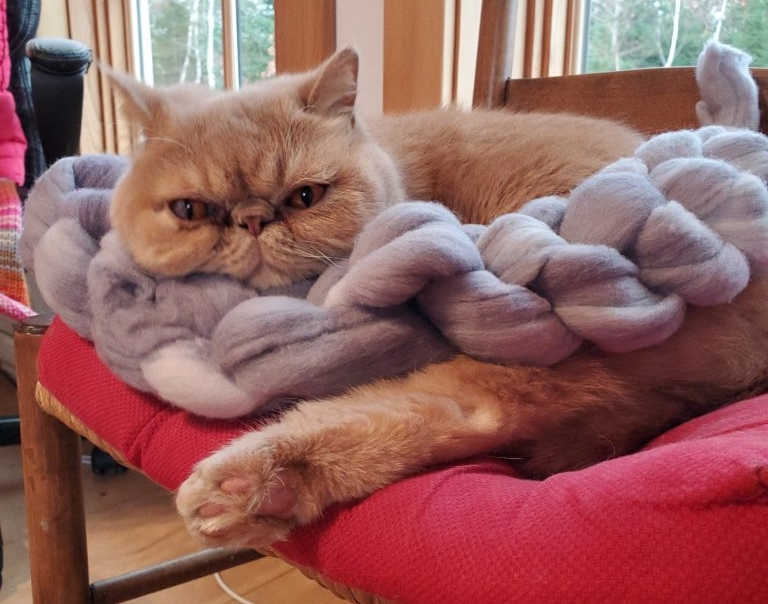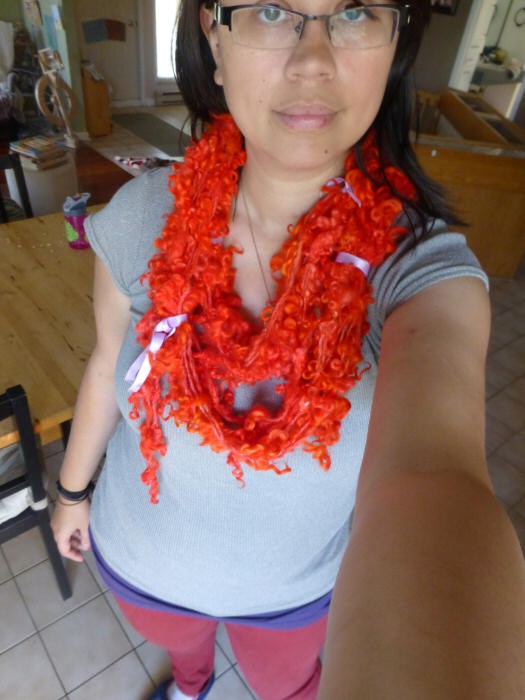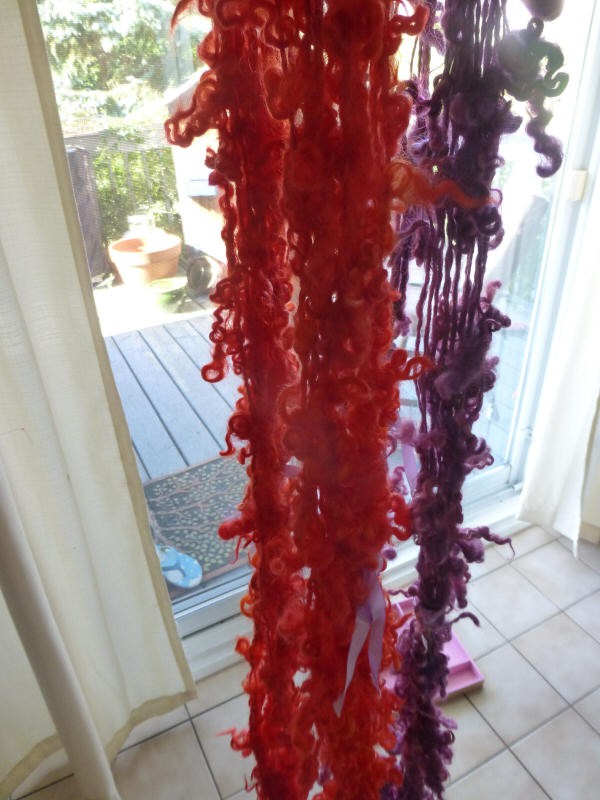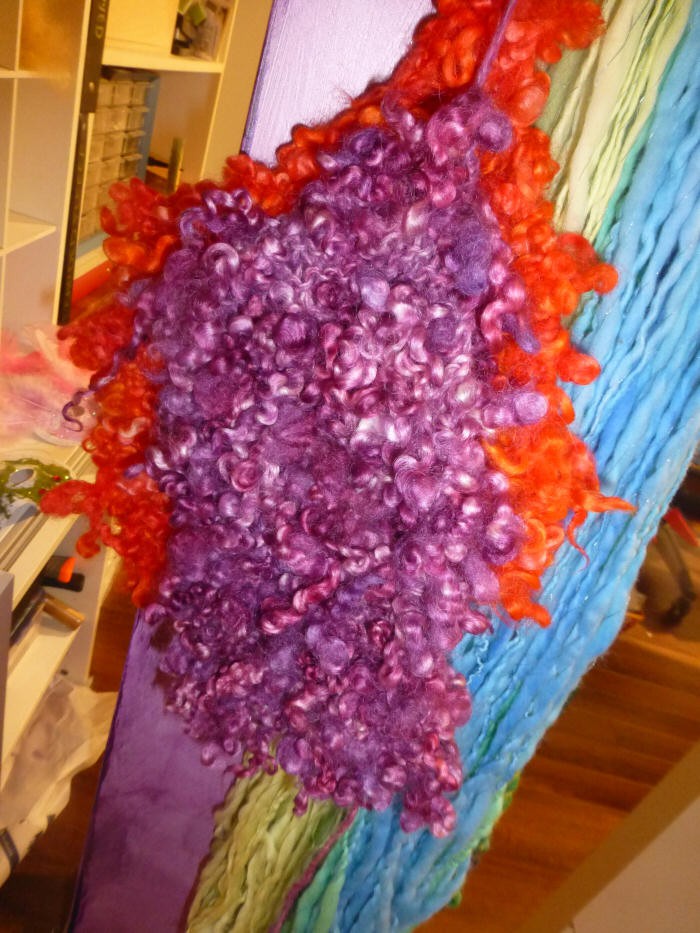A Totally Unexpected Handspun Outcome
A few months ago, I posted about dyeing roving in a crockpot, which is my favorite method for dyeing fiber for spinning. I used colors that I had just gotten in stock as examples, and the resulting color was not a combo I would typically dye.
The goal of that video was to show how I dye roving in a crockpot one color at a time, so there was no thought into the colors I was putting together. I needed samples of each color for my dye binder, so I decided to dye the roving at the same time, to create a video of the process.
You Can Watch the Dyeing Roving Video Here:
Now I have a roving made out of several primary-like colors, but I have no idea how to spin it. I was convinced that no matter how I spun this, it would be a mess of color and not necessarily desirable. Okay, I’ll say it. It was going to be ugly! And I’ll have to over-dye it.
A Creative Epiphany
One day, while working in the garden, I had an idea pop into my head about how I could try to spin it. Even though I didn’t have a solid plan on how I would eventually ply it, and was not very confident that it would even look nice, I decided to be vulnerable and record the process anyway. I figure my failure would lead to others’ success. Learn from my mistakes, as you will.
This project required the use of the Lendrum fast flyer once again, and I decided to go for it and use the smallest whorl. I can’t express how much I love this fast flyer for spinning more consistent thin singles!
Another aspect that made spinning this yarn easier was that I decided to strip the roving into very thin strips. This was because I wanted the color to be in shorter intervals throughout. The first bobbin looked really good, so I decided to chain ply it. However, I reminded myself that the whole point of this project was to experiment and see what I would get if I plied this roving together without rhyme or reason, color-wise.
I stripped this roving into as thin a piece as possible. Sometimes that meant one end would be thicker than the rest, sometimes that meant I wouldn’t get a full strip with all the colors. I purposely mixed it up, sometimes even turning the strips of roving upside down. I intentionally wanted to jumble up the colors as much as possible.
Even then, I was surprised at how much of the yarn is two plies of the same color, with one opposing color. Even in some sections, there would be a total solid color. It was fascinating to watch the colors come together as I plied this yarn.
Apprehensive to Share the Outcome
To say I was a bit nervous and feeling vulnerable sharing this process in a vlog is an understatement! I was prepared to create a second video where I would overdye the result. I was convinced this would be the most hideous 3-ply yarn I had ever seen.
To see what this roving looks like now, all spun up, check out the video above. 😉
The end result? Let’s just say I should have never pre-judged this yarn. The final handspun yarn is nothing like I thought it would be!
It will be fun to decide what to make with all 800+ yards of this sport-weight yarn, but for now, it’s hanging in the studio. I’m blown away at how much yardage I have in this colorful skein, and how quickly it spun up in the grand scheme of things. I should have purchased the fast flyer attachment for my wheel a long time ago! I might have spun thinner yarns more often (I’m more of a worsted-weight & bulky yarn spinner). This project opened up so many possibilities for my yarn design creativity.
I hope you enjoyed this month’s project. If you like my content, be sure to subscribe to my YouTube Channel and explore the fiber arts/dyeing/spinning section of the blog.
Until Next Time,



